I stare at screens all day, so I have learned that a tired monitor can drain both eyes and energy, even before it fully breaks down.
Replace a monitor when its picture quality, brightness, or response speed no longer supports comfortable, accurate, and safe daily work—usually after five to seven years or sooner if faults appear.
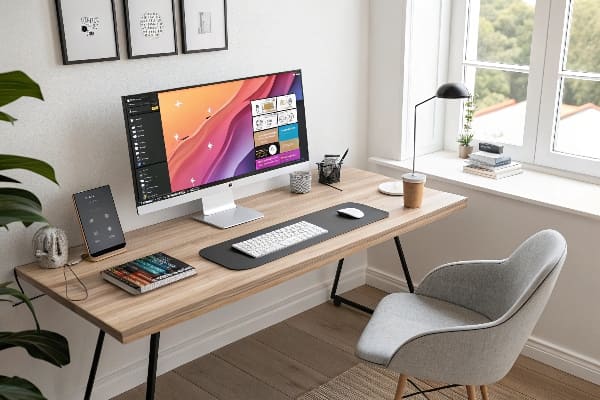
A fading screen hurts focus and slows projects. Yet many owners wait for a total blackout. Read on and see the simple checks I use in my factory and office before a monitor becomes a hidden cost.
When should you replace monitors?
Every production run at my plant depends on clear designs. When colors slip or text blurs, cardboard print proofs look fine on-screen yet ship out wrong. That single pain drove me to set a clear replacement rhythm.
Change monitors when brightness drops below 80 % of the original, when dead pixels cluster, or when panel tech lags behind your daily tasks, typically every 5–7 years.

Why age matters
Even if a panel still lights up, its backlight dims. Colors drift. Eyestrain climbs. I track these shifts with a simple test slide each quarter.
| Indicator | Easy Test | Replace? |
|---|---|---|
| Luminance loss1 | Compare white patch to new phone screen | >20 % lower |
| Color shift2 | Look at company logo red | Noticeable tint |
| Image retention | Show gray grid, then black | Ghost lines remain |
| Response lag3 | Drag fast window edges | Motion smear |
Budget now beats rush orders later. A scheduled swap means less downtime and keeps design reviews true.
How do I know if I need to replace my monitor?
I once shipped a rush display stand to a U.S. trade show. The blue sky on the artwork printed purple. My monitor looked fine alone, but side-by-side with a visitor’s laptop the flaw was brutal.
You need a new monitor if colors appear uneven, text looks fuzzy at native resolution, or your eyes ache after short sessions despite proper lighting and breaks.
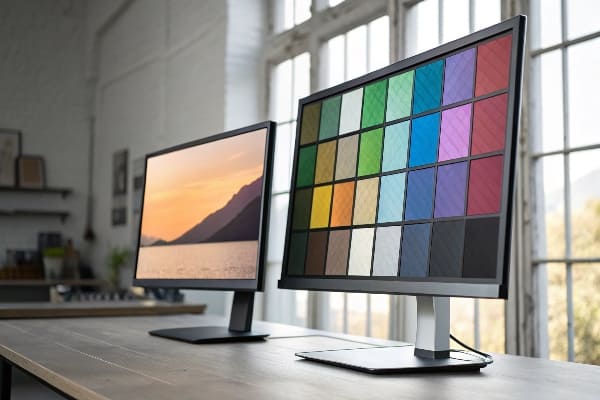
Simple at-desk checks
I teach new staff a quick health scan4.
| Symptom | Likely Cause | Next Step |
|---|---|---|
| Uneven brightness clouds | Aging backlight | Calibrate; plan replacement |
| Faint vertical lines | Failing drivers or panel | Test cable, then replace |
| Sudden flicker | Capacitor wear | Replace soon |
| Glaring reflection | Low contrast panel | Upgrade to matte screen |
Run these checks monthly. Small issues grow into misprints, returns, and lost clients. Staying ahead keeps our brand promise strong.
How do I know when to upgrade my monitor?
New software, not age, pushed my last upgrade. My CAD tool moved to 4K UI. Scaling on the old 1080p panel cut usable workspace in half.
Upgrade when your tasks demand higher resolution, wider color, faster refresh, or modern ports that the current monitor cannot deliver without bottlenecks.
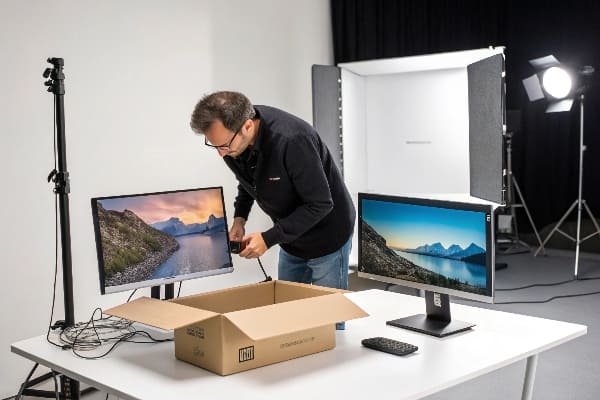
Match task to spec
Upgrading is not vanity; it is efficiency.
| Task | Needed Spec | Benefit |
|---|---|---|
| 3D packaging renders5 | ≥4K, 100% sRGB | Spot print artifacts |
| Fast prototyping videos6 | 120 Hz refresh | Smooth motion edits |
| Color-critical proofing7 | 10-bit panel, 99% Adobe RGB | True brand tones |
| Multi-document review | Ultrawide 34" | Fewer window swaps |
When the gap between job need and screen spec widens, I act. New panels cost less than reworking a thousand misprinted boxes.
Why should I get a new monitor?
Early in my career I saw designers blame themselves for late nights fixing “their” errors. The culprit was an aging TN panel. Bright on top, dim below.
A new monitor protects eye health, boosts speed, improves color trust, and projects professionalism to clients who judge your gear as well as your work.
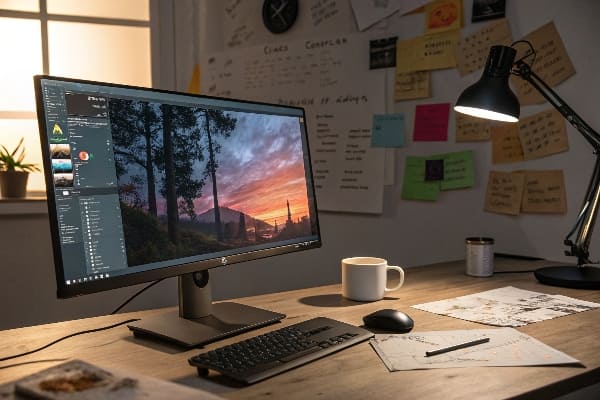
Payoffs that add up
Numbers convince finance teams.
| Benefit | Daily Gain | Annual Impact* |
|---|---|---|
| Reduced eye strain8 | 15 min saved breaks | +60 hrs |
| Faster color approval9 | 1 fewer revision round | –$2 000 |
| Lower energy use10 | –15 W per unit | –$25 |
| Client trust | Higher repeat rate | +10 % sales |
*Estimates based on my three-line plant output. Small tweaks compound into big growth.
How long should you keep a computer monitor?
Some suppliers boast “ten-year life.” In practice, my displays linger until they hold back people or proof quality. I log purchase dates on our maintenance board.
Keep a monitor five to seven years, or until brightness, color, or tech standards fall below daily needs; recycling sooner beats forcing outdated gear to limp on.
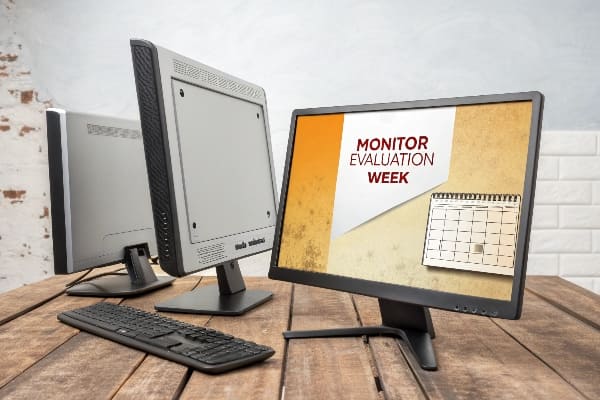
End-of-life plan
Responsible disposal matters.11
| Step | Action | Note |
|---|---|---|
| Data safety | Wipe any built-in storage | Rare but check |
| Local rules | Contact e-waste center12 | Avoid fines |
| Corporate image | Donate still-good units | CSR boost |
| Future proof | Choose models with replaceable stands, USB-C | Longer relevance |
I coordinate pickups during slow weeks so production never stops. Good habits turn one small change into a lean, reliable workflow.
Conclusion
Timely monitor changes cut errors, spare eyes, and keep every design sharp—plan replacements before faults plan them for you.
Understanding luminance loss helps in maintaining optimal display performance and prolonging device lifespan. ↩
Exploring color shift causes can enhance your knowledge about display quality and improve your viewing experience. ↩
Learning about response lag reduction techniques can significantly enhance your gaming and productivity experience. ↩
Understanding health scans can help maintain equipment efficiency and prevent costly issues. ↩
Explore how 3D packaging renders can enhance design efficiency and quality, ensuring better outcomes in production. ↩
Learn how fast prototyping videos can streamline your design process and enhance the quality of your edits. ↩
Discover the significance of color-critical proofing in maintaining brand integrity and achieving accurate color representation. ↩
Explore how reducing eye strain can enhance productivity and employee well-being, leading to a healthier work environment. ↩
Learn how streamlining color approval processes can save time and money, improving overall business efficiency. ↩
Discover the advantages of reducing energy consumption, including cost savings and environmental benefits for your business. ↩
Understanding responsible disposal practices can help you minimize environmental impact and comply with local regulations. ↩
Finding a local e-waste center ensures proper recycling and disposal of electronic devices, protecting the environment. ↩

